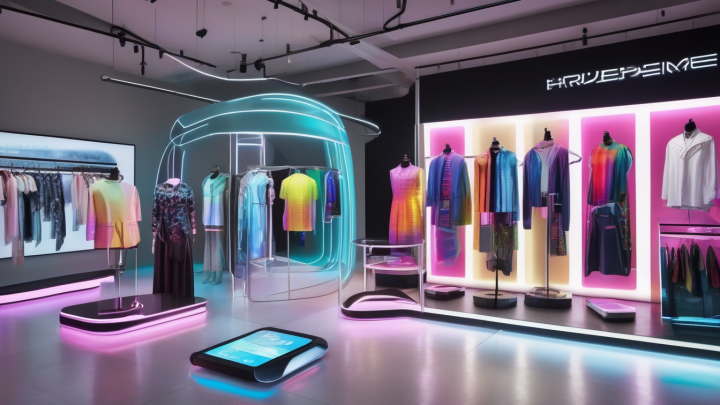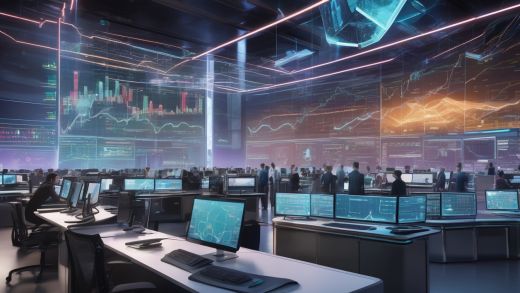In today’s fast-paced world, the fashion industry is undergoing a remarkable transformation, thanks to the rise of artificial intelligence (AI). This technology is not just a buzzword; it’s a game-changer that is reshaping how brands operate and how consumers shop. Imagine walking into a store where everything feels tailored just for you, or flipping through your favorite fashion app and seeing only the items that match your unique style. Sounds dreamy, right? Well, it’s becoming a reality!
One of the most significant ways AI is making waves in fashion is through its ability to predict trends. By analyzing vast amounts of data—from social media chatter to past sales figures—AI can identify patterns and forecast what styles will be hot in the coming months. This means fashion brands can stay ahead of the curve, ensuring they offer products that resonate with consumers. No more guesswork; it’s like having a crystal ball that reveals the future of fashion!
But AI doesn’t stop at just trend forecasting. It dives deep into personalization, creating shopping experiences that feel like they were made just for you. By examining your behavior, preferences, and purchase history, AI algorithms can suggest items that you’re likely to love. Think of it as having a personal shopper who knows your style better than you do!
To implement these AI strategies effectively, brands need to understand how to collect and analyze customer data. Techniques include:
- Tracking online shopping behaviors
- Analyzing social media interactions
- Utilizing feedback and reviews
These insights allow brands to refine their AI systems, leading to more accurate predictions and recommendations.
Social media platforms are treasure troves of consumer insights. By monitoring trends on platforms like Instagram and TikTok, AI systems can adapt in real-time, ensuring that brands are always in tune with what consumers want.
Furthermore, behavioral analytics allows retailers to see how customers interact with products. This information is crucial for creating personalized experiences that cater to individual preferences, making shopping not just a task, but an enjoyable journey.
Despite its potential, the fashion industry faces hurdles in adopting AI. Issues like data privacy, integration with existing systems, and the need for skilled professionals to manage these technologies can complicate the process. It’s vital for brands to navigate these challenges to harness the full power of AI.
Looking ahead, the future of AI in fashion is bright. As technology continues to evolve, its applications will expand, leading to innovative solutions that enhance consumer engagement and streamline operations for brands.
Emerging technologies like machine learning and natural language processing are set to revolutionize the fashion industry even further. These advancements will create new opportunities for brands and consumers alike, making the shopping experience more intuitive and enjoyable.
Lastly, AI holds the promise of driving sustainability in fashion. By optimizing supply chains and reducing waste, AI can promote eco-friendly practices that align with the growing consumer demand for sustainable products. In a world where sustainability is key, AI could be the hero we all need!
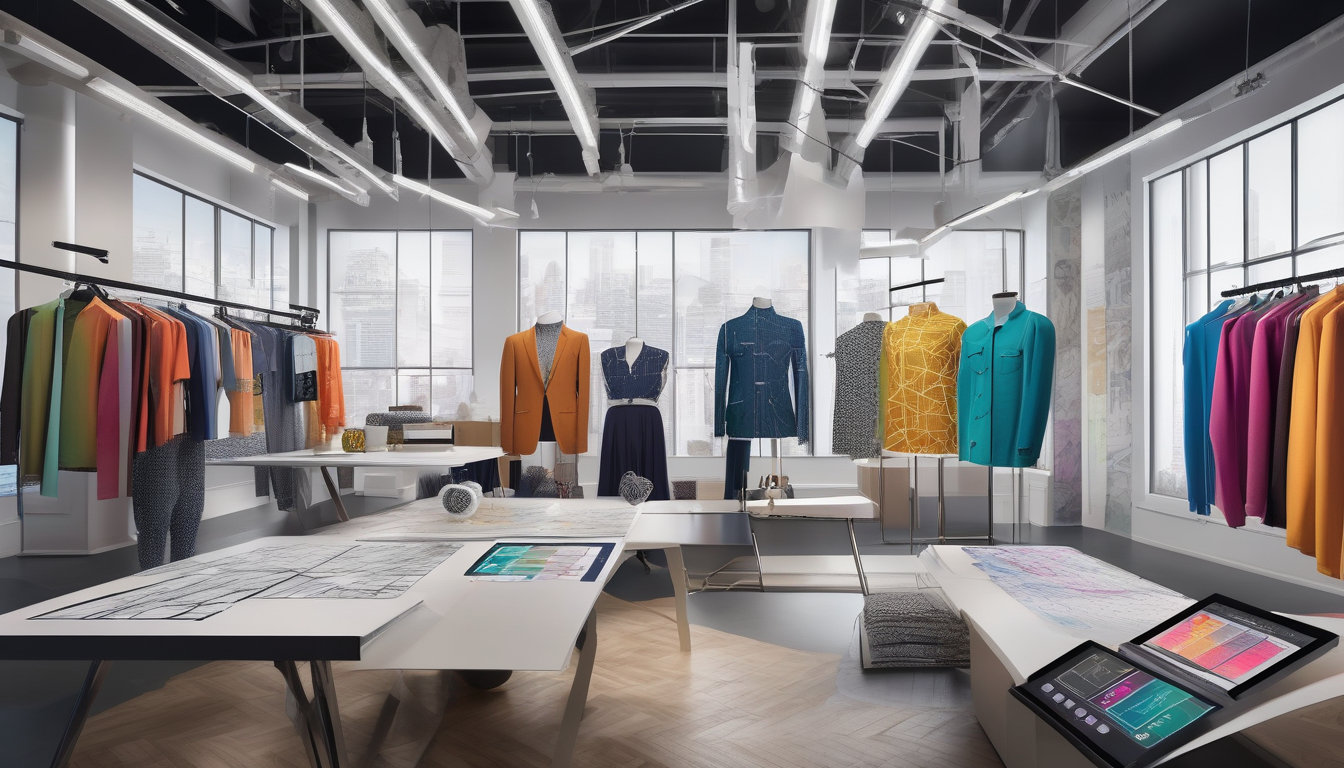
The Role of AI in Trend Forecasting
Artificial Intelligence (AI) is revolutionizing the way fashion brands predict trends, acting like a crystal ball that analyzes data from various sources to foresee what consumers will desire next. Imagine having the ability to sift through mountains of data—this is precisely what AI does, allowing brands to stay one step ahead in an ever-evolving market. By leveraging advanced algorithms, AI can detect patterns and shifts in consumer behavior that might go unnoticed by human analysts.
So, how does this work? AI algorithms analyze a plethora of data points, including:
- Social media interactions
- Sales data
- Fashion shows and events
- Search engine queries
This comprehensive analysis helps brands identify emerging trends before they explode into the mainstream. For instance, if a particular style starts gaining traction on platforms like Instagram, AI can flag this trend early, prompting brands to adjust their collections accordingly. This proactive approach is essential in a fast-paced industry where consumer preferences can shift overnight.
Moreover, AI’s predictive capabilities extend beyond just identifying trends. It can also analyze seasonal variations and cultural shifts, allowing brands to tailor their offerings to specific demographics. For example, if data shows a growing interest in sustainable fashion among millennials, brands can pivot their strategies to incorporate eco-friendly materials and practices, aligning with consumer values.
In conclusion, AI is not just a tool for trend forecasting; it’s a game-changer that empowers fashion brands to make informed decisions, enhancing their ability to connect with consumers. As technology continues to advance, the potential for AI in predicting trends will only grow, making it an invaluable asset for the fashion industry.
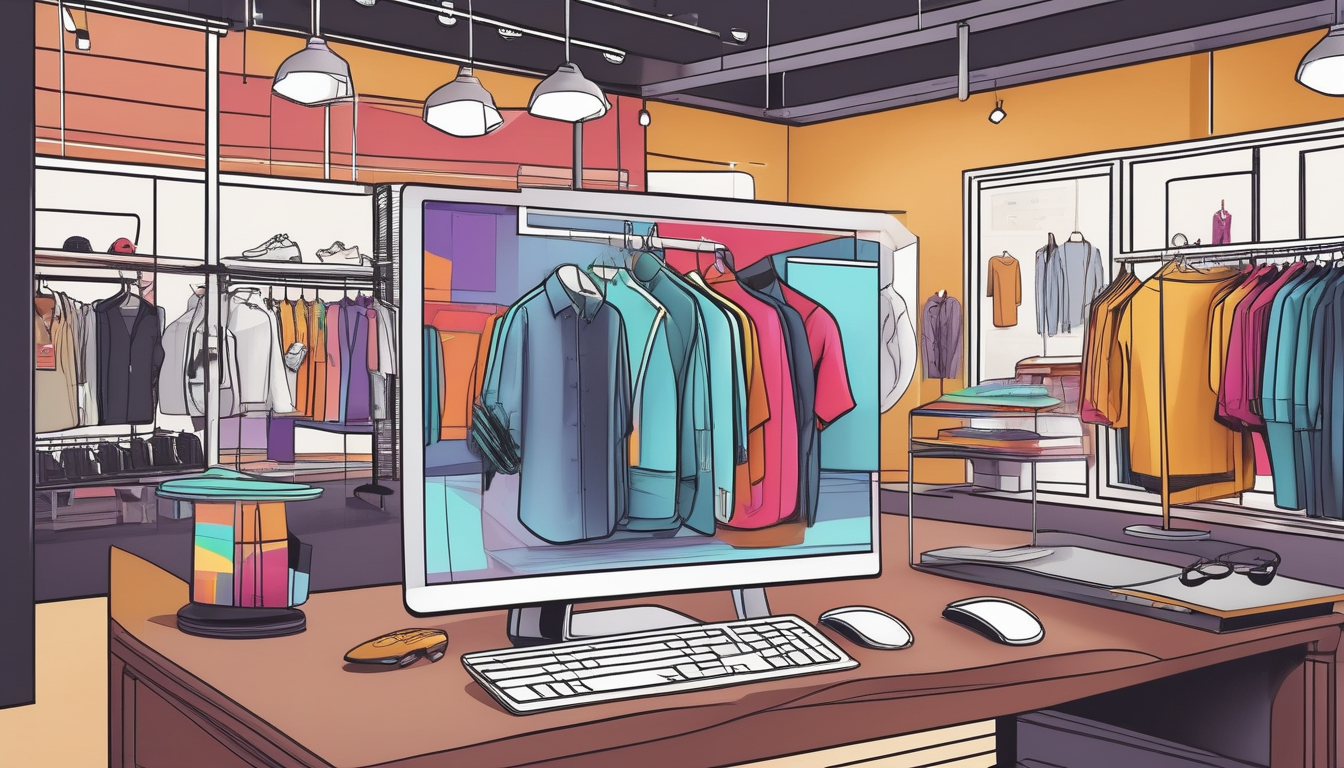
Personalization through AI Algorithms
In today’s fast-paced fashion world, personalization is the name of the game. Gone are the days of one-size-fits-all shopping experiences. Thanks to the power of AI algorithms, retailers can now tailor their offerings to match individual customer preferences, making shopping not just a task, but a delightful journey. Imagine walking into a store that knows exactly what you like, what fits you best, and what styles are trending just for you!
How does this magic happen? Well, it all starts with the data. AI systems analyze a treasure trove of information, including:
- Customer behavior
- Past purchases
- Browsing history
- Social media interactions
By crunching these numbers, AI can create a profile that reflects your unique taste and shopping habits. This means when you log onto an online store, you’re greeted with a selection that feels like it was curated just for you. It’s like having a personal stylist available 24/7!
Moreover, these algorithms don’t just stop at understanding what you like; they also predict what you might want next. This predictive capability is a game-changer. For instance, if you frequently purchase summer dresses, the AI can suggest new arrivals that match your style, ensuring you never miss out on the latest trends.
But it’s not just about selling more; it’s about enhancing customer satisfaction. When shoppers feel understood and valued, they are more likely to return. This leads to increased loyalty and, ultimately, a boost in sales for brands. In fact, studies have shown that personalized recommendations can increase conversion rates by up to 300%! That’s a significant leap!
As we move forward, the importance of AI-driven personalization in fashion will only grow. The more brands embrace these technologies, the more they will be able to connect with their customers on a deeper level, creating a shopping experience that is not only efficient but also enjoyable.
Customer Data Collection Techniques
In the fast-paced world of fashion, understanding customer behavior is key to staying relevant. Brands are constantly seeking innovative ways to collect data that can inform their strategies and enhance customer experiences. One of the most effective techniques is through customer surveys, where brands directly ask consumers about their preferences, shopping habits, and feedback on products. This method not only provides valuable insights but also engages customers, making them feel valued.
Another powerful tool is website analytics. By tracking user interactions on their sites, brands can gather crucial data on how customers navigate their online stores. This includes metrics such as page views, time spent on specific products, and click-through rates. Analyzing this data helps retailers understand what captures consumer interest and what might be turning them away.
Additionally, social media monitoring has emerged as a vital technique. Platforms like Instagram and Twitter are treasure troves of consumer sentiment and trends. By analyzing comments, likes, and shares, brands can gauge public opinion and adjust their offerings accordingly. This real-time feedback loop allows for quicker adaptations to changing consumer preferences.
Furthermore, many brands utilize loyalty programs to collect data over time. These programs not only reward repeat customers but also enable brands to track purchase history and preferences. This accumulated data can then be analyzed to create highly personalized shopping experiences. For instance, a brand might notice that a customer frequently buys athletic wear and can then tailor promotions or recommendations specifically for that category.
As the fashion industry embraces these techniques, it’s clear that the future lies in leveraging data to create a more personalized and engaging shopping experience. By understanding how customers think and behave, brands can not only meet expectations but also exceed them, paving the way for a more connected and satisfying retail environment.
Utilizing Social Media Insights
In today’s digital age, social media has become an invaluable resource for fashion brands seeking to understand their customers better. Platforms like Instagram, Twitter, and TikTok are not just for sharing photos or videos; they are treasure troves of consumer sentiment and preferences. By tapping into these insights, brands can stay ahead of the curve and create products that resonate with their audience.
AI systems can analyze vast amounts of social media data to identify trending topics, popular styles, and even the emotions behind consumer interactions. For instance, a spike in hashtags related to a specific clothing style can indicate a rising trend. This real-time data allows brands to pivot their strategies quickly, ensuring they meet consumer desires almost instantaneously.
Moreover, social media insights can help brands craft personalized marketing strategies. By understanding what content engages their audience, brands can tailor their messaging to align with the interests of their followers. This not only enhances engagement but also fosters a sense of community around the brand. Imagine a brand launching a new collection that mirrors the styles their audience has been raving about online; the connection created is powerful and can drive sales significantly.
To illustrate the impact of social media insights, consider the following table:
| Social Media Platform | Key Insights |
|---|---|
| Visual trends, influencer collaborations, and user-generated content. | |
| Real-time discussions, trending hashtags, and consumer feedback. | |
| TikTok | Short-form video trends, viral challenges, and youth culture insights. |
By leveraging these insights, fashion brands can not only predict trends but also enhance their customer engagement strategies. In essence, social media is not just a platform for marketing; it is a vital tool for understanding and connecting with consumers on a deeper level.
Behavioral Analytics in Retail
In today’s fast-paced retail environment, understanding customer behavior is more crucial than ever. Behavioral analytics allows retailers to dive deep into the patterns and preferences of their customers, enabling them to tailor shopping experiences that resonate on a personal level. By collecting data on how customers interact with products—whether they’re browsing online, visiting a store, or engaging on social media—brands can gain invaluable insights into what drives consumer decisions.
Imagine walking into a store where every product seems to be curated just for you. This isn’t magic; it’s the power of behavioral analytics at work. Retailers can track metrics such as time spent on certain products, click-through rates on websites, and even social media interactions to build a comprehensive profile of their customers. This data can be visualized in tables to highlight trends and preferences:
| Customer Interaction Type | Data Collected | Insights Gained |
|---|---|---|
| In-Store Visits | Foot traffic, product engagement | Popular items, store layout effectiveness |
| Online Browsing | Page views, time spent per product | Interest levels, potential purchase intent |
| Social Media Engagement | Likes, shares, comments | Brand perception, trending products |
Using these insights, retailers can implement strategies that enhance the shopping experience. For example, if a customer frequently browses athletic wear but hasn’t made a purchase, targeted promotions or personalized recommendations can be sent their way. This not only increases the likelihood of a sale but also fosters a sense of connection between the brand and the consumer.
Ultimately, behavioral analytics isn’t just about collecting data; it’s about transforming that data into actionable insights. As retailers harness these analytics, they can create shopping experiences that are not only personalized but also engaging, driving customer loyalty and satisfaction in a competitive marketplace.
Challenges in Implementing AI
While the integration of artificial intelligence into the fashion industry presents exciting opportunities, it also comes with its fair share of challenges. One of the most pressing concerns is data privacy. As brands collect vast amounts of customer data to fuel their AI algorithms, they must navigate the complex landscape of data protection regulations. Consumers are increasingly aware of their privacy rights, and any mishandling of personal information can lead to a significant loss of trust.
Another challenge is the integration with existing systems. Many fashion retailers rely on legacy systems that may not be compatible with cutting-edge AI technologies. This can create roadblocks in implementing AI solutions effectively. Brands often find themselves in a situation where they must invest heavily in upgrading their infrastructure just to keep pace with technological advancements, which can be a daunting task.
Moreover, the need for skilled personnel cannot be overstated. The fashion industry is facing a talent gap when it comes to AI expertise. Hiring data scientists and AI specialists can be costly, and the competition for skilled professionals is fierce. Without the right talent in place, brands may struggle to leverage AI effectively, stalling their potential growth and innovation.
In addition to these challenges, brands must also consider the cultural shift that comes with adopting AI. Employees may resist changes to traditional processes, fearing that AI could replace their jobs. This resistance can hinder the overall adoption of AI technologies within organizations. To overcome this, brands need to foster a culture of innovation and educate their workforce on the benefits of AI, showing them how it can enhance their roles rather than replace them.
In summary, while the journey to implement AI in fashion is fraught with challenges, addressing these issues head-on can pave the way for a more innovative and customer-centric industry. The key lies in balancing technological advancement with ethical practices and workforce readiness.
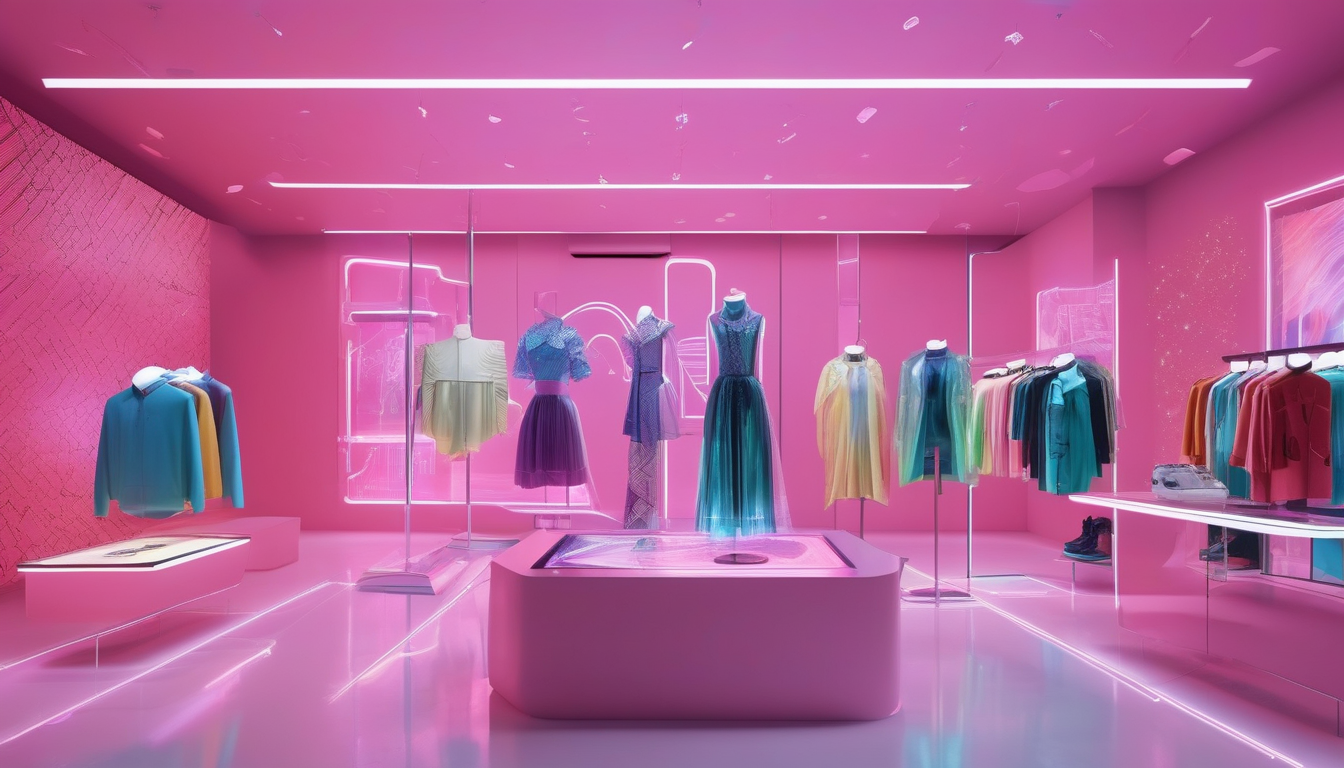
Future Trends in AI and Fashion
As we gaze into the crystal ball of the fashion industry, it’s clear that artificial intelligence is not just a fleeting trend; it’s a game changer. The future of AI in fashion is poised to be as exciting as a runway show, with innovations that promise to reshape how we shop and interact with brands. Imagine walking into a store where the clothes seem to know your style better than you do! This is not science fiction; it’s the reality that AI is crafting for us.
One of the most exhilarating prospects is the integration of machine learning and natural language processing. These technologies are set to revolutionize how brands communicate with consumers. Picture a virtual assistant that not only understands your preferences but can also suggest outfits based on the latest trends and your previous purchases. This level of personalization is not just a luxury; it’s becoming the norm. Retailers will harness these tools to create tailored shopping experiences that feel uniquely crafted for each individual.
Moreover, AI is stepping up its game in the realm of sustainability. As consumers increasingly demand eco-friendly products, AI can optimize supply chains to minimize waste. By analyzing data on production processes and consumer habits, brands can make informed decisions that align with sustainability goals. For instance, AI can predict which materials will be in demand, allowing brands to reduce overproduction and its environmental impact.
However, with great power comes great responsibility. The fashion industry must navigate challenges such as data privacy and the ethical implications of AI usage. Ensuring that customer data is handled responsibly will be paramount as we move forward. Brands that prioritize transparency will likely earn consumer trust and loyalty, paving the way for a brighter, more sustainable future.
In summary, the future of AI in fashion is not just about keeping up with trends; it’s about creating a more personalized, sustainable, and engaging shopping experience. As technology evolves, so too will the possibilities, making the fashion landscape more dynamic than ever before.
Emerging Technologies in AI
As we dive deeper into the realm of artificial intelligence, it’s clear that emerging technologies are set to revolutionize the fashion industry in ways we’ve only begun to imagine. One of the most exciting advancements is machine learning, which allows AI systems to learn from data patterns and improve their predictions over time. This means that fashion brands can anticipate trends with astonishing accuracy, making it easier to cater to consumer desires before they even emerge.
Another groundbreaking technology is natural language processing (NLP), which enables machines to understand and interpret human language. This capability can transform customer interactions. For instance, chatbots powered by NLP can provide personalized recommendations based on customer inquiries, creating a seamless shopping experience. Imagine chatting with a virtual assistant that not only understands your style preferences but also suggests outfits tailored to your taste!
Furthermore, computer vision is making waves by allowing AI to analyze images and videos. This technology can be used to identify trending styles by scanning social media feeds, runway shows, and even street fashion. By analyzing visual content, brands can quickly adapt their offerings to align with what’s hot right now. For example, if a particular color or silhouette is gaining traction, AI can alert designers to incorporate these elements into their upcoming collections.
In addition to these technologies, the integration of augmented reality (AR) is reshaping how consumers shop. With AR, customers can virtually try on clothes from the comfort of their homes, enhancing their shopping experience and reducing return rates. This technology not only boosts customer satisfaction but also encourages more informed purchasing decisions.
As these emerging technologies continue to develop, they promise to reshape the fashion landscape, creating a more dynamic, responsive, and personalized shopping environment. The fusion of AI with fashion is not just a trend; it’s a transformation that will redefine how we engage with style and innovation.
Impact on Sustainability
Artificial intelligence (AI) is not just reshaping the way we shop; it’s also paving the way for a more sustainable future in the fashion industry. Imagine a world where fashion brands can reduce waste and optimize their supply chains, all thanks to the power of AI. This technology is revolutionizing how companies approach sustainability, making it easier to meet the growing consumer demand for eco-friendly practices.
One of the most significant impacts of AI on sustainability is its ability to analyze data related to supply chains. By utilizing advanced algorithms, brands can forecast demand more accurately, which leads to:
- Reduced overproduction
- Minimized waste
- Enhanced resource management
For instance, AI can predict which styles are likely to sell well based on historical data and current trends, allowing brands to produce only what is necessary. This not only conserves resources but also helps in reducing the carbon footprint associated with manufacturing excess products. Furthermore, by optimizing logistics and inventory management, AI ensures that products are delivered efficiently, further cutting down on emissions.
Moreover, AI-driven technologies can promote sustainable materials by analyzing consumer preferences and trends. Brands can identify which eco-friendly materials resonate with their audience, encouraging them to invest in greener alternatives. This shift not only satisfies consumer demand but also fosters a culture of sustainability within the industry.
As we look to the future, the role of AI in promoting sustainability in fashion will only grow. The integration of AI with emerging technologies like blockchain can enhance transparency in the supply chain, allowing consumers to make informed choices. In this way, AI is not just a tool for efficiency; it’s a catalyst for a more sustainable and responsible fashion industry.
Frequently Asked Questions
- How does AI predict fashion trends?
AI analyzes massive datasets from various sources, including social media, sales history, and consumer behavior, to identify patterns and predict upcoming trends. By processing this information quickly, AI helps brands stay ahead of market shifts.
- What role does personalization play in online shopping?
Personalization enhances the shopping experience by tailoring product recommendations based on individual preferences and past purchases. This not only increases customer satisfaction but also boosts sales as shoppers are more likely to find items they love.
- How do brands collect customer data for AI?
Brands utilize various techniques such as tracking online behavior, analyzing purchase history, and gathering insights from social media interactions. This data is crucial for creating effective AI algorithms that improve the shopping experience.
- What are the challenges of implementing AI in fashion?
While AI offers many benefits, the fashion industry faces challenges like data privacy concerns, the need for integration with existing systems, and finding skilled personnel to manage these advanced technologies.
- How can AI contribute to sustainability in fashion?
AI can optimize supply chains, reduce waste, and promote eco-friendly practices, aligning with the growing consumer demand for sustainable products. This helps brands not only meet consumer expectations but also contribute positively to the environment.
